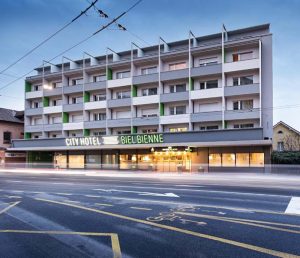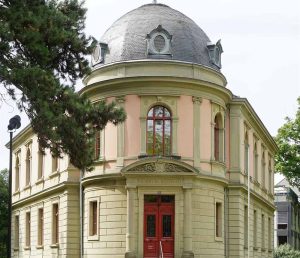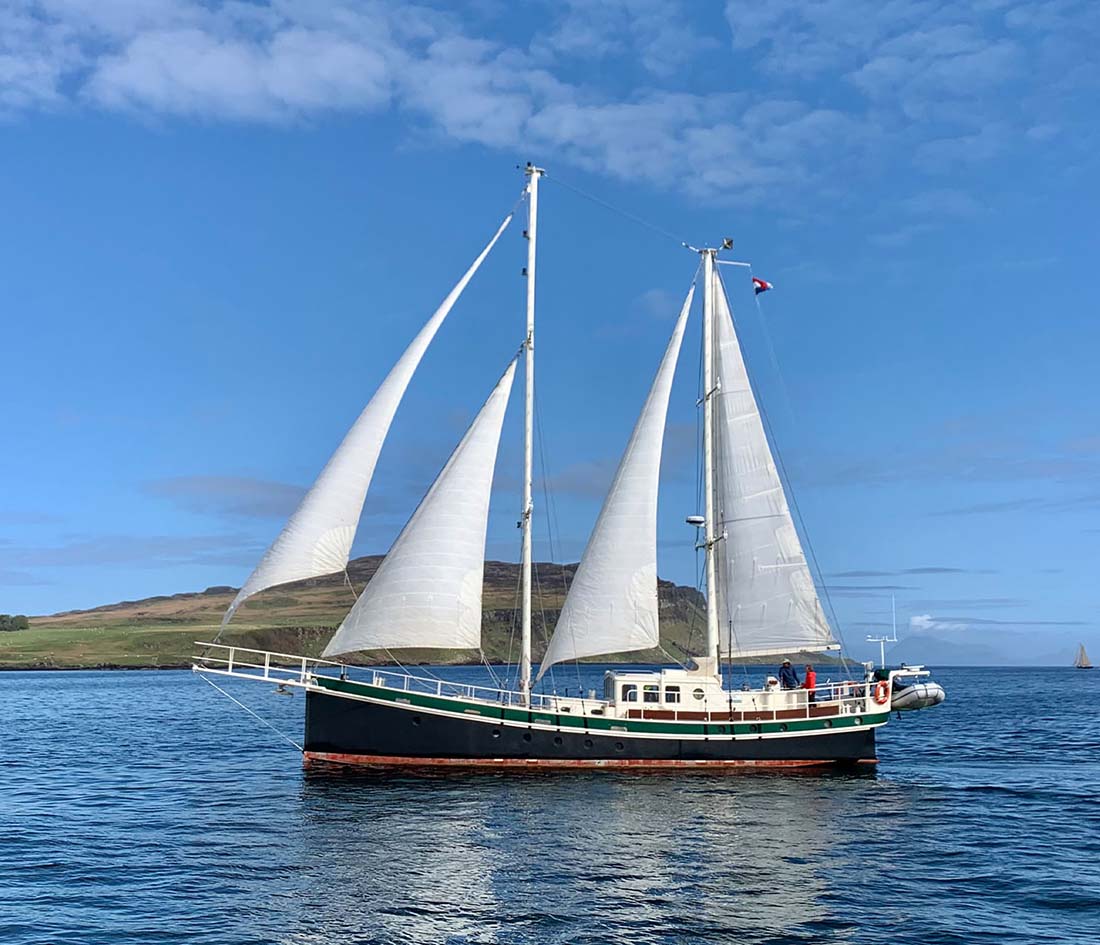
Setting sail from the captivating city of Edinburgh marked the beginning of a maritime adventure promising both historical charm and scenic splendor. I eagerly embarked on a journey to explore the expansive waters surrounding this Scottish gem.
Orkney Islands
Situated north of mainland Scotland, the Orkney Islands unfolded before me as an enchanting archipelago, seamlessly blending ancient history with awe-inspiring landscapes. This destination, surrounded by pristine shores, is a living testament to Scotland’s rich cultural heritage and offers a captivating tapestry of experiences.
Skara Brae: As I ventured into the Neolithic village of Skara Brae, a designated UNESCO World Heritage site, I found myself transported back in time. The remarkably preserved dwellings allowed me an intimate glimpse into prehistoric life, revealing advanced construction techniques and fostering a palpable sense of community that echoed through the ages.
Ring of Brodgar: The ancient stone circle of Ring of Brodgar, set against a backdrop of rolling hills, proved to be a surreal and mystical experience. The air was imbued with an ancient aura, stirring my imagination as I traversed the historic site. The panoramic views, stretching across the surrounding landscape, were nothing short of mesmerizing, offering a profound connection to the history and natural beauty of the Orkney Islands.
Old Man of Hoy: The dramatic cliffs, standing resilient against the relentless embrace of the sea, created a spectacle that was simultaneously awe-inspiring and humbling. The sheer grandeur of this natural wonder left an indelible mark, showcasing the untamed beauty of the Orkney coastline.
The Faroe Islands, with their remote allure and pristine landscapes, surpassed my expectations, creating a travel experience that was both enchanting and memorable. Each village within this archipelago possessed a distinct character, and the unwavering commitment of the locals to preserving their traditions added an unparalleled authenticity to my journey. Despite the occasional challenges posed by the unpredictable weather, it only served to enhance the sense of adventure.
Practical Information:
Geographical Location: Faroe Islands, North Atlantic
Access: Accessible by flights from Edinburgh or ferries from Iceland
Pros: Untouched landscapes, vibrant culture, friendly locals
Cons: Unpredictable weather, limited transportation options
Accommodation: The accommodation options, ranging from cozy guesthouses to traditional Faroese homes, offered a unique glimpse into local life, with prices typically falling between £60 and £120 per night.
Transportation: Opting for car rental proved to be the most recommended choice, providing flexibility to explore the islands at one’s own pace. Budgeting approximately £30 to £50 per day for car rental ensured a comfortable and independent mode of transportation.
Entrance Fees: Noteworthy attractions like Gásadalur, Tórshavn, and Saksun had no entrance fees, allowing for budget-friendly exploration of the stunning landscapes and cultural sites.
Booking Platform:
For a seamless experience, I utilized Booking.com for accommodation bookings and purchased ferry tickets directly from the operator’s website, ensuring a smooth and hassle-free exploration of the Orkney Islands.
Faroe Islands
Sailing further north, the Faroe Islands presented a picturesque panorama of cliffs, fjords, and charming villages. This autonomous territory under Danish rule offered a unique blend of Nordic culture and untamed landscapes.
Gasadalur: Tucked between towering cliffs, Gasadalur boasts the iconic Mulafossur waterfall. The juxtaposition of cascading water against the rustic village backdrop created a scene that felt straight out of a fairy tale.
Torshavn: The capital of the Faroe Islands, Torshavn, captured my heart with its colorful houses and vibrant harbor. Exploring the narrow streets and enjoying local cuisine at one of the charming cafes provided a perfect blend of relaxation and cultural immersion.
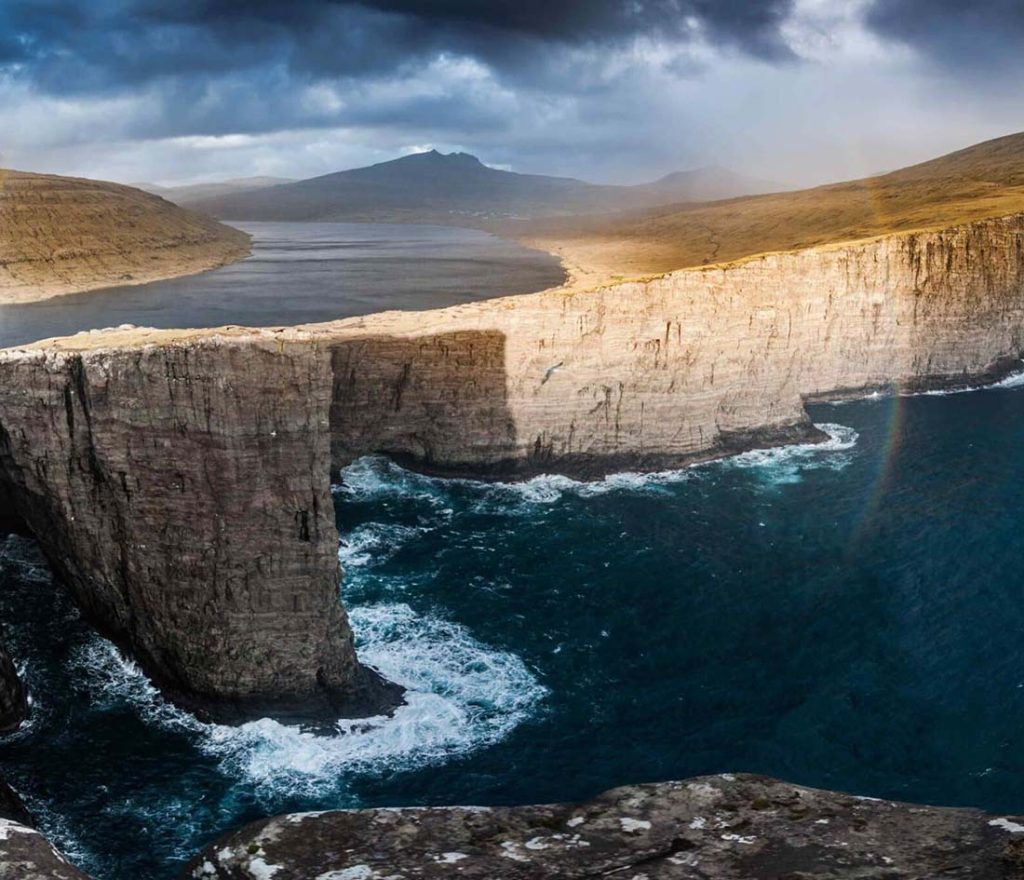
Saksun: This tranquil village, surrounded by mountains and a tidal lagoon, offered a serene escape. The journey to Saksun involved a scenic drive through winding roads, revealing the raw beauty of the Faroese countryside.
The Faroe Islands, with their remote charm and untouched landscapes, exceeded my expectations. Each village had its unique character, and the locals’ commitment to preserving their traditions added authenticity to my experience. The unpredictable weather, while challenging at times, only added to the adventure.
Practical Information:
- Geographical Location: Faroe Islands, North Atlantic
- Access: Flights from Edinburgh or ferry from Iceland
- Pros: Untouched landscapes, vibrant culture, friendly locals
- Cons: Unpredictable weather, limited transportation options
Logistics:
- Accommodation: Guesthouses and traditional Faroese homes
- Transportation: Car rental is recommended for flexibility
Costs:
- Accommodation: £60-£120 per night
- Transportation: £30-£50 per day (car rental)
- Entrance Fees: Gasadalur – Free, Torshavn – Free, Saksun – Free
Booking Platform:
For the Faroe Islands, I found reliable accommodation options through Airbnb and secured my rental car through a local agency.
Reykjavik, Iceland
The final leg of my maritime journey led me to Reykjavik, the vibrant capital of Iceland. This city, surrounded by otherworldly landscapes, offered a perfect blend of urban exploration and natural wonders.
Hallgrimskirkja: This iconic church, with its distinctive architecture, dominates Reykjavik’s skyline. The panoramic views from the observation deck provided a stunning introduction to Iceland’s unique topography.
Blue Lagoon: A visit to Iceland would be incomplete without a dip in the geothermal waters of the Blue Lagoon. The rejuvenating experience amidst the lava fields showcased the country’s geothermal prowess.
Golden Circle: Exploring the Golden Circle route allowed me to witness the powerful Gullfoss waterfall, the geysers at Geysir, and the historic site of Þingvellir National Park. Each stop unveiled a different facet of Iceland’s geological wonders.
Reykjavik’s cosmopolitan charm and the surrounding natural wonders provided a perfect conclusion to my maritime journey. The city’s artistic flair, coupled with the surreal landscapes, left me in awe. While Reykjavik is undoubtedly more developed than the previous destinations, it still maintains a strong connection to nature.
Practical Information:
- Geographical Location: Reykjavik, Iceland
- Access: Direct flights from Faroe Islands or ferry from Denmark
- Pros: Unique urban-nature blend, diverse attractions
- Cons: Higher cost of living, crowded tourist spots
Logistics:
- Accommodation: Hotels in the city center or guesthouses in the outskirts
- Transportation: Public buses and taxis within the city, car rental for exploring further
Costs:
- Accommodation: £80-£150 per night
- Transportation: £10-£30 per day (public transport), £50-£80 per day (car rental)
- Entrance Fees: Hallgrimskirkja – £10, Blue Lagoon – £40-£80, Golden Circle – Free (Þingvellir), Gullfoss – Free, Geysir – Free
Booking Platform:
For Reykjavik, I opted for a hotel booking through Expedia and pre-booked my Blue Lagoon experience through the official website for added convenience.
Four Recommended Destinations:
Shetland Islands:
The Shetland Islands are located northeast of the Orkney Islands. These islands are known for being a paradise for both wildlife enthusiasts and history buffs.
Jarlshof Archaeological Site: This is a significant archaeological site on the Shetland Islands, showcasing a complex settlement with remains dating back to the Bronze Age, Iron Age, Pictish period, and Viking era. It provides a fascinating glimpse into the rich history of the region.
Sumburgh Head Lighthouse: Sumburgh Head is a prominent headland, and the lighthouse located there is a notable landmark. It likely offers stunning views of the surrounding seascape and serves as both a functional structure and a point of interest for visitors.
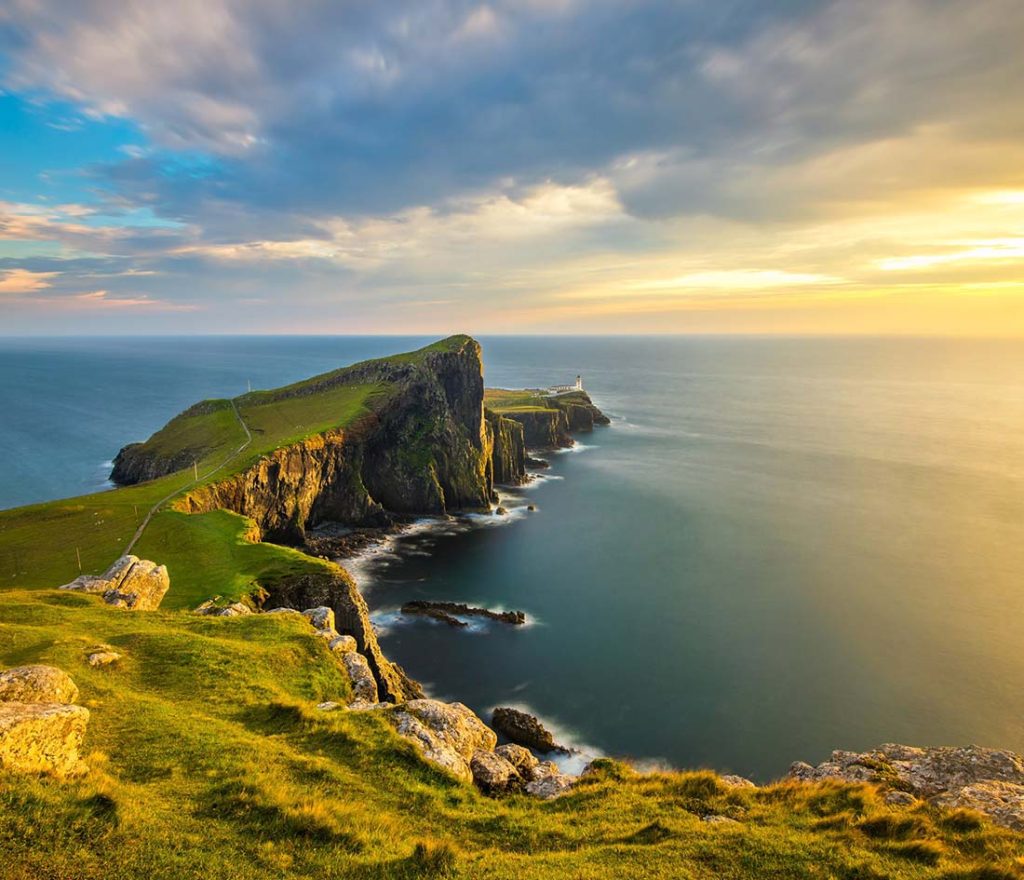
Lerwick’s Charming Old Town: Lerwick, the capital of the Shetland Islands, boasts a captivating Old Town. The term “charming” suggests that it has a delightful and attractive quality. Old Towns often feature historical architecture, narrow streets, and a unique atmosphere that reflects the area’s heritage.
Accessible by car or bus from Inverness. Accommodation ranges from luxury hotels to quaint inns.
Isle of Skye:
The Isle of Skye is an island located off the west coast of Scotland. It is known for its rugged landscapes, medieval castles, and mythical charm.
Fairy Pools: The Fairy Pools are likely natural pools or waterfalls on the Isle of Skye known for their beauty and perhaps associated with local folklore or fairy tales. This could be a scenic and enchanting natural attraction.
Dunvegan Castle: Dunvegan Castle is a medieval castle on the Isle of Skye, suggesting a historical and cultural point of interest. Castles often have rich histories, and Dunvegan may have tales of its own to tell.
The Quiraing: The Quiraing is a distinctive and dramatic landscape feature on the Isle of Skye. It could be a unique geological formation, such as a landslip or escarpment, known for its scenic beauty and possibly its cultural or mythological significance.
Accessible by Car or Bus from Inverness: This implies that the Isle of Skye can be reached by either car or bus from Inverness. Inverness is likely a transportation hub or starting point for travelers heading to the Isle of Skye, emphasizing accessibility.
Accommodation Ranges from Luxury Hotels to Quaint Inns: The available accommodations on the Isle of Skye cater to various preferences, ranging from luxurious hotels for those seeking high-end amenities to quaint inns, which typically offer a more charming and intimate lodging experience.
Hebrides – Lewis and Harris:
The islands of Lewis and Harris are part of the Outer Hebrides, and they offer a remote and untamed escape.
Callanish Standing Stones: The Callanish Standing Stones are likely a significant archaeological site, suggesting a collection of ancient standing stones. Such sites often have cultural and historical importance, and they might be associated with rituals or ancient beliefs.
Luskentyre Beach: Luskentyre Beach is highlighted, indicating it as a notable natural attraction known for its scenic beauty. Stunning beaches often attract visitors seeking tranquility and picturesque landscapes.
Butt of Lewis Lighthouse: The Butt of Lewis Lighthouse is a specific lighthouse on the Isle of Lewis, marking a prominent point on the island’s geography. Lighthouses are not only functional for navigation but also serve as iconic landmarks.
Ferries connect the Hebrides to Ullapool. Accommodation includes traditional croft houses and modern B&Bs.
Bergen, Norway:
Despite its exclusion from the British Isles, Bergen stands as a destination readily reachable from the Faroe Islands, providing a maritime escapade imbued with Scandinavian charm.
Key attractions encompass the historic Bryggen Wharf, the scenic Fløibanen Funicular, and the lively fish market, collectively contributing to the city’s allure.
Convenient air travel links directly connect Bergen with the Faroe Islands. Accommodation choices span from stylish waterfront hotels to intimate guesthouses, catering to diverse preferences.
The maritime exploration journey from Edinburgh unfolded as a tapestry woven with history, natural wonders, and the warmth of diverse cultures. From the ancient sites of the Orkney Islands to the untamed landscapes of the Faroe Islands and the urban-nature fusion in Reykjavik, each destination offered a unique perspective. The recommended spots further enrich the maritime adventure, showcasing the diversity that the British Isles and their neighboring regions have to offer. As the sails are lowered and the anchor is raised, the memories of this journey will forever ripple through the vast expanse of my travel experiences.

